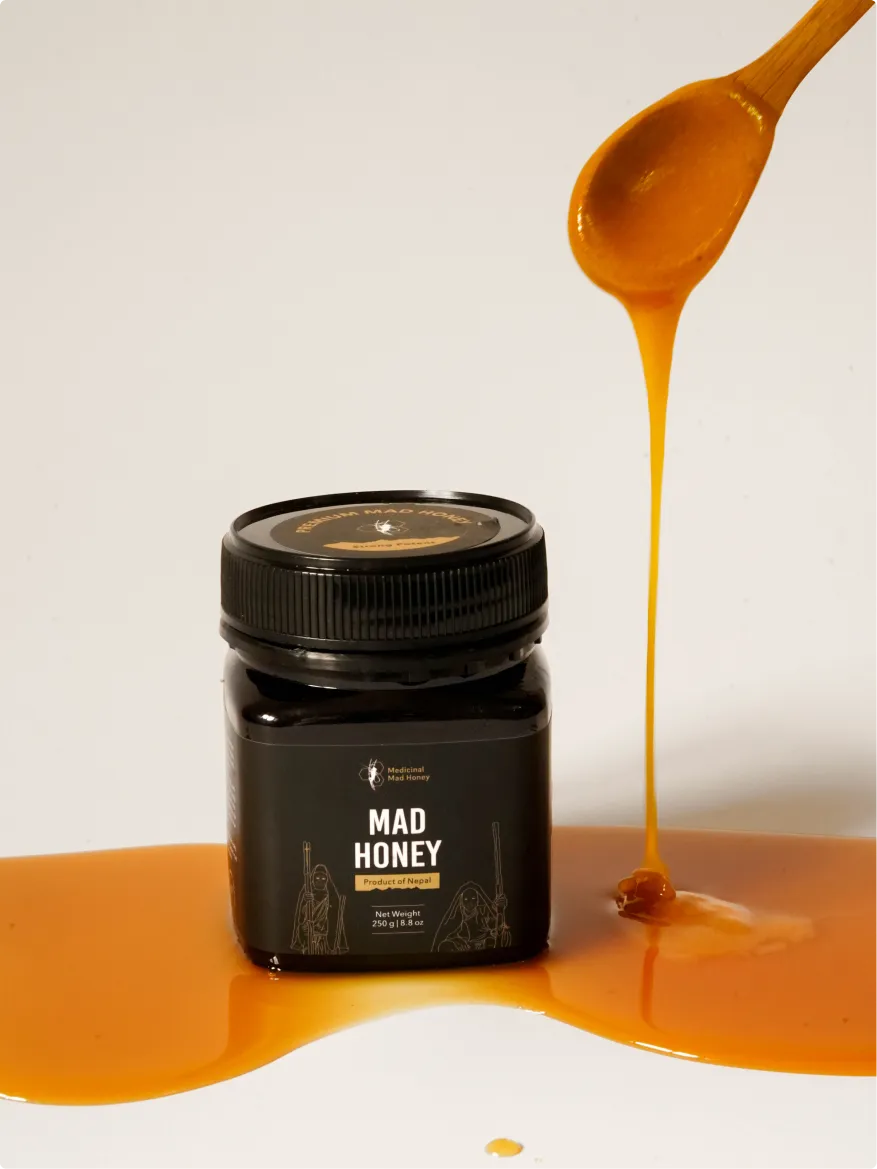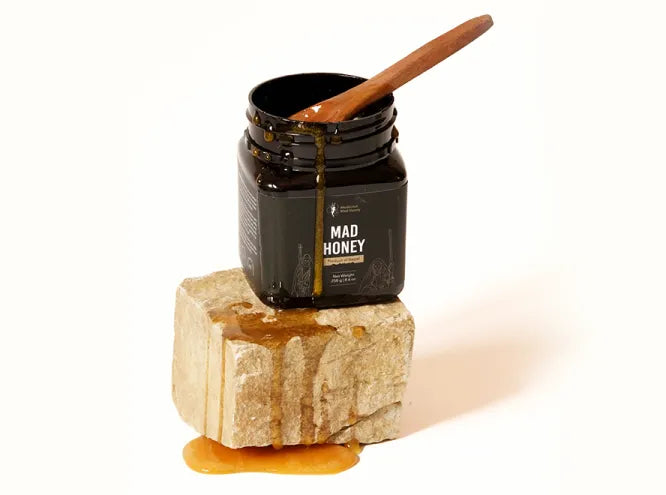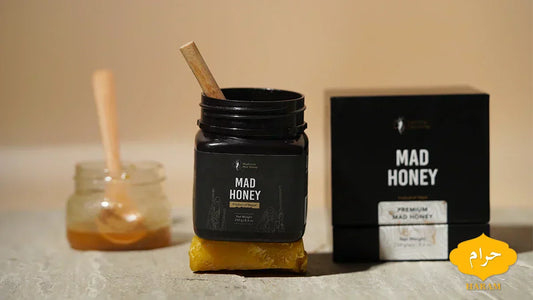Mad honey is like any regular honey, formed in the hives, made by bees. Though regular honey is considered halal in Islamic culture, the same does not apply to mad honey.
The presence of any intoxicating substance makes a food haram in this particular culture and this ruling also applies to mad honey. Grayanotoxin, a natural compound found in the nectar of rhododendron flowers, is what’s responsible for the intoxicating effects of mad honey.
What Is Mad Honey?
Mad honey is a rare and unique honey variety that’s been able to make a worldwide sensation due to its psychedelic properties. A little of its dose; a few teaspoons is enough for the consumers to go through mind-altering symptoms like dizziness or light-headedness. All these effects are caused by grayanotoxins present in the nectar of rhododendrons.
Made by Himalayan Giant bees found only in the high Himalayas, the hives are as large as several feet in size which produce a limited amount of honey that gets harvested only twice a year. The extracted mad honey comes to the market once it gets purified.
Purification Processes:
There is no extensive purification process for mad honey. The wax, pollen or larvae present in the honey are simply filtered out and the honey is ready to be consumed.

Final Gryanotoxin Content
The grayanotoxin content in mad honey is present in a minimal amount. With an optimum dose of about one teaspoon, the effect is mild sensations including symptoms like warmth, slight dizziness, or relaxation..
Even though the toxin is not highly concentrated, when consumed in excess, symptoms such as nausea, vomiting, low blood pressure, and fainting have been reported.
Comparative Religious Perspectives
The consumption of mad honey is as normal as using regular honey. First discovered and used by local harvesters of the remote Himalayan villages, the honey later became popular and celebrated by people around the world for its unique psychedelic properties.
Though it got accepted by different religions over the world, it became a question of permissibility in the Islamic faith which is binded by the guiding principle “anything that intoxicates is haram- regardless of its source”. The religion allows its followers to consume only what is halal, which carries the meaning of free of harm or intoxication.
Indigenous spiritual practices in Nepal and surrounding regions: In indigenous traditions across Nepal and nearby Himalayan regions, mad honey has long been used in small amounts during rituals and healing practices. It is believed to enhance spiritual awareness, vitality, and connection to nature when consumed responsibly.
Overall, the religions that take a balanced view- where context and intention are considered- do not label mad honey as strictly forbidden. If the honey is consumed in small, non-intoxicating amounts, especially for medicinal purposes, it is generally regarded as permissible. Hence, for the religions that allow such contextual interpretation, the determining factors are intent, dosage, and effect rather than the substance itself.
Modern Understanding and Guidance
From a modern perspective, mad honey still attracts interest due to its possible therapeutic value. Studies have shown it can be used to treat some health issues in small and carefully controlled doses like to improve circulation or relieve minor pains. Nonetheless, overuse has significant health effects, such as nausea, low blood pressure, and dizziness.
Among the people who are conscious of religious or ethical eating habits, restraint and consciousness are necessary. In general, it is recommended that mad honey should not be consumed in the event of the possibility of intoxication or other negative health impacts. The ability to be responsible in use and know the dosage is key to safety and can help you align with personal or spiritual principles.
Conclusion
Mad honey is a fascinating natural product- rare, powerful, and part of culture in regions where it was originally discovered. Yet, its intoxicating properties make it a subject of debate especially among communities that don't allow consumption of foods with a risk of intoxication.
While regular honey is accepted universally, mad honey occupies a more complex space as its intoxicating properties easily outweigh the benefits the honey has to offer.
Ultimately, caution, moderation, and informed understanding should guide its consumption, especially among those mindful of religious and ethical dietary principles.
FAQs
Q: Is honey halal or haram?
A: The regular honey available in the market is halal, as it is a pure natural product and has no any intoxicating substances.
Q: What is mad honey made of?
A: Like any regular honey, mad honey has natural sugars in it obtained from wild flowers of the high altitudes. Besides the sugars, it has a unique natural substance called grayanotoxins that possess psychedelic properties.
Q: Is mad honey halal or haram?
A: Mad honey is haram in accordance with the Islamic ruling, which directly prohibits any substance causing intoxication, even if it is of natural synthesis or origin.
References
https://pmc.ncbi.nlm.nih.gov/articles/PMC9080652/
https://www.tandfonline.com/doi/full/10.1080/14746700.2025.2472125




